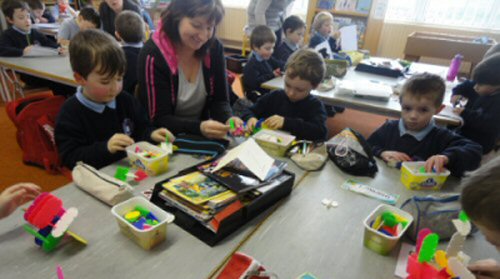Infants- First Class
1. Read to your child as often as you can.
2. Talk about books /characters / plots.
3. Enrol your child in the local library.
4. Provide a good role model by reading yourself / other family members.
5. Keep audio tapes of familiar stories to play in the car.
6. Vary the type of books read – stories /poems / information.
7. Accept your child’s efforts with praise.
8. Concentrate on what he /she got right.
9. Make reading together enjoyable.
10. Take part in school based initiatives like Literacy Lift Off.
2nd – 4th Class
1. Continue to read to your child everyday.
2. Read some of the books your child enjoys so you can discuss them with him/her.
3. Encourage your child to read to younger brothers/ sisters.
4. Ensure that your child knows that you value and enjoy reading yourself.
5. Make sure there is a wide variety of reading material in your home – newspapers, magazines, information, cookery books etc.
6. Enrol and encourage your child to visit the local library once a week.
7. Discuss favourite authors.
8. Encourage your child to read articles / headlines in newspapers.
9. Encourage your child to guess unknown words.
5th and 6th Class
1. Encourage your child to visit the local library as often as possible.
2. Recognise and praise your child’s efforts in reading.
3. Ensure your child has access to a wide range of reading material –newspapers,
magazines, guides etc.
4. Take an interest in different children’s authors.
5. Discuss ideas and points of view proposed by newspaper articles etc.
6. Provide a well lit study / reading area.
7. Ensure that you value and enjoy reading yourself.
8. Allow your child to choose his /her own reading material.
9. Encourage your child to read for information – timetables / weather
forecasts / menus
10. Encourage your child to try and guess unknown words.











































